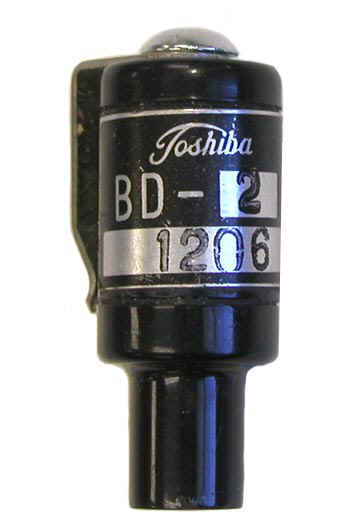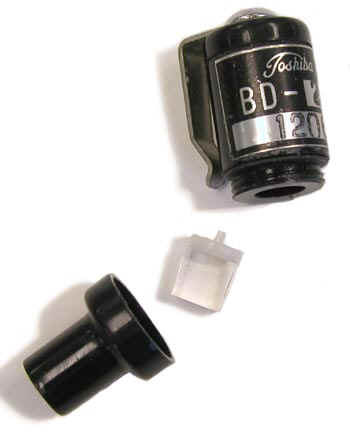Radiophotoluminescent Dosimeter (ca. 1960s)
During the 1960s, improvements made to radiophotoluminescent (RPL) glass by the Toshiba Corporation and the concurrent improvements in the design of the readers increased the sensitivity of RPL dosimeters to the point that they became suitable for routine health physics (Yokota 1967, Becker 1968). The BD-2 is an early version of Toshiba's commercial glass dosimeters.


The device actually contains two glass dosimeters. The smaller of the two, for high range dosimetry, is located in the narrow bottom section (see photo above right). The larger and more sensitive of the two is housed in the top section (not shown). A tin filter is used to flatten the energy response—glass dosimeters tend to over-respond to low energy gamma rays and X-rays.
Size: 5/8" diameter and 1 3/4" high
Donated by Ron Kathren.
Reference
- Ron Kathren, personal communication.
- Becker K. Recent progress in radiophotoluminescence dosimetry. Health Phys 14: 17-32: 1968.
- Yokota R, Nakajima S. Recent improvements in radiophotoluminescent dosimetry. In: Attix FH, ed. Luminescence dosimetry. Proc Int Conf Lumin Dos June 21-23, 1965: 284-299; 1967.
